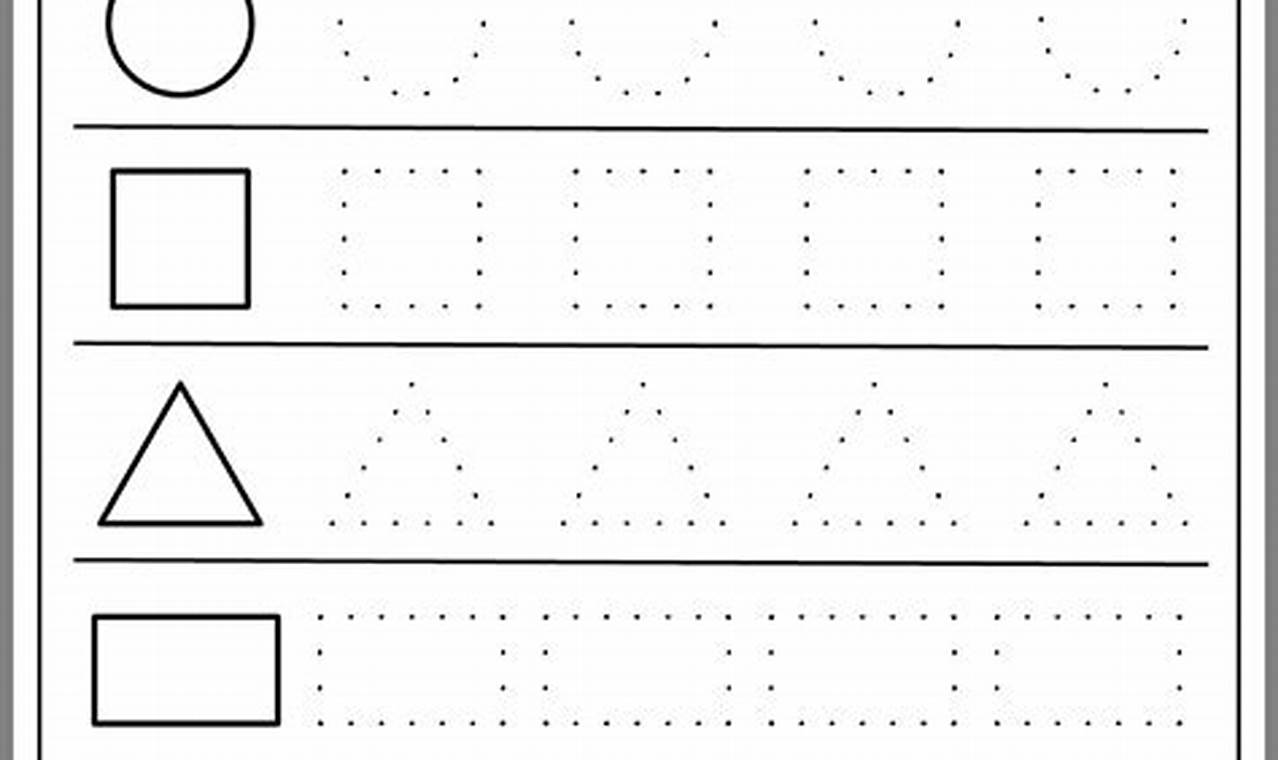Geometric shape tracing is a foundational activity that introduces children to the world of mathematics and art simultaneously. It lays the groundwork for future academic success by developing essential pre-writing skills and visual perception abilities. This process encourages young learners to explore spatial relationships and enhance their understanding of different forms and their properties.
The use of geometric shape tracing worksheets offers several key learning benefits. It enhances fine motor skills, which are crucial for handwriting and other precise tasks. It also strengthens hand-eye coordination, enabling children to visually track and accurately reproduce shapes. Furthermore, it improves shape recognition, which is a fundamental aspect of early math and geometry concepts. These worksheets also promote concentration and attention to detail, skills beneficial across all learning domains.
This worksheet contains a variety of common geometric shapes for tracing, including circles, squares, triangles, rectangles, and ovals. Each shape is presented with bold, clear outlines, making it easier for young children to follow. Ample space is provided around each shape to allow for multiple practice attempts. The worksheet also incorporates fun illustrations related to shapes, such as a circle representing a sun or a triangle representing a mountain, to engage children and make learning more enjoyable.
To use the geometric shape tracing worksheet effectively, begin by providing a comfortable and quiet learning environment. Offer the child a thick pencil or crayon, as these are easier for small hands to grip and control. Encourage the child to start tracing at the designated starting point, following the outline of the shape carefully and slowly. If the child struggles, guide their hand gently and provide verbal encouragement. Break the task into smaller parts by focusing on one shape at a time, allowing for short breaks in between to prevent fatigue. Repeat each shape several times to reinforce muscle memory and improve accuracy.
To complement the geometric shape tracing worksheet, consider incorporating other related resources. Kidtraces.com offers a range of additional tracing worksheets that focus on letters, numbers, and patterns. Educational games involving shape sorting and matching can also reinforce the concepts learned. Reading books with simple geometric shapes illustrations can further enhance understanding and recognition. Daily activities like pointing out different shapes in the environment, such as a square window or a round plate, can solidify learning in a practical way.
Geometric shape tracing worksheets provide a valuable tool for developing essential cognitive and motor skills in young children. By downloading and utilizing this worksheet, parents and educators can support early learning and set the stage for future academic success. Explore more free worksheets on Kidtraces.com to continue nurturing continuous learning and skill development in an engaging and effective manner.
